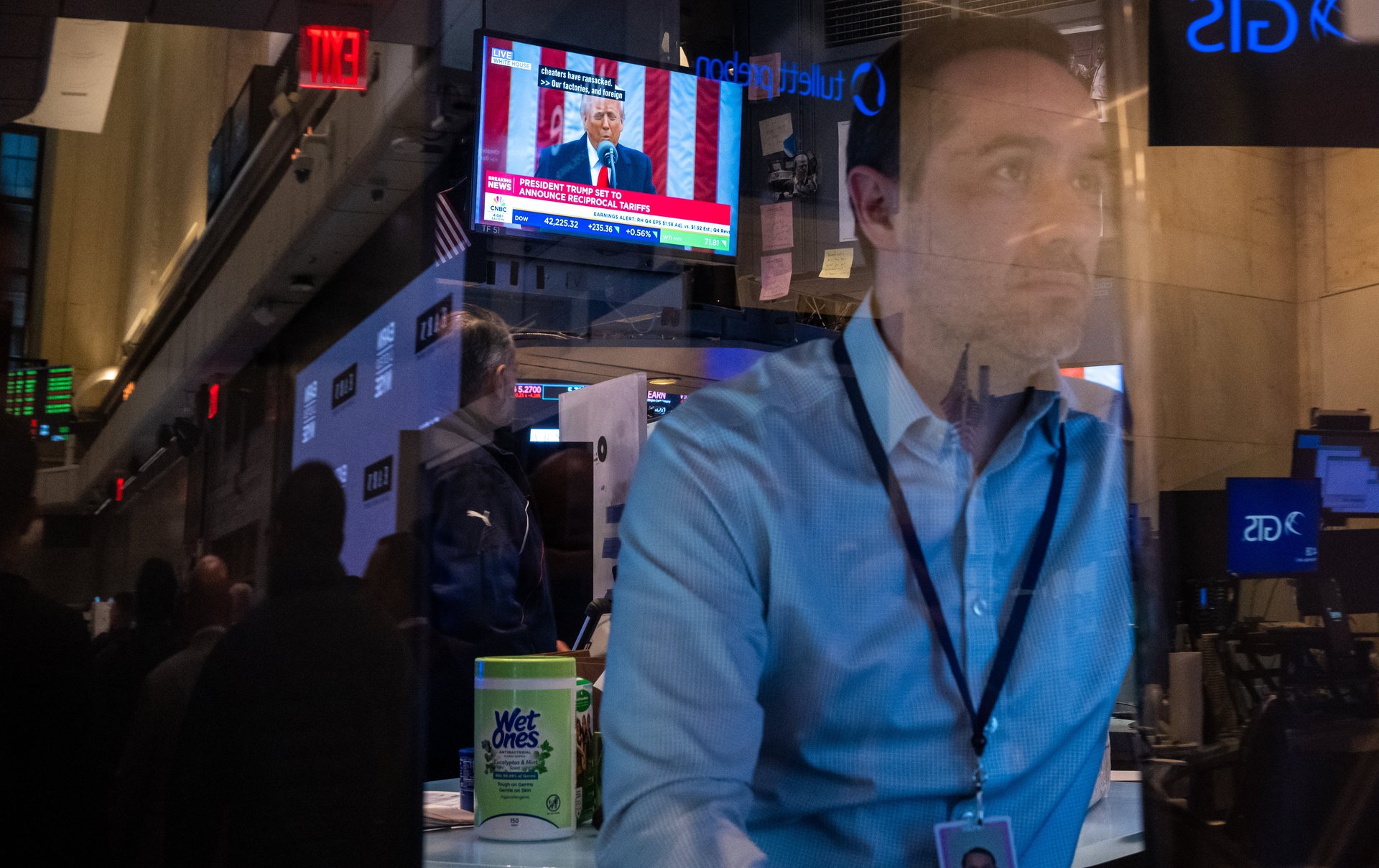Stocks have their worst day in years as the Dow plunges almost 1,700 points on Trump's new tariffs
The S&P 500 sank almost 5% and the Nasdaq Composite fell 6% as stagflation fears came roaring back

Markets plummeted Thursday in the wake of President Donald Trump’s tariffs. The Dow Jones Industrial Average shed 1,679.39 points, or 4%, with the damage extending to most industries on the prospects of stagflation — that is, slower economic growth accompanied by faster inflation.
Suggested Reading
The S&P 500 plunged 4.8% and the Nasdaq Composite index fell 6%, making Thursday the market’s worst day for stocks in five years. Airlines, retailers and big banks took big hits, with some healthcare companies among the few gainers.
Related Content
For the Magnificent 7, declines were 9.3% for Apple (AAPL), 9% for Amazon (AMZN), 9% for Meta (META), 5.5% for Tesla (TSLA), 7.8% for Nvidia (NVDA), 2.4% for Microsoft (MSFT), and 3.9% for Google’s parent Alphabet (GOOGL). Big Tech will be vulnerable to retaliation by the European Union.
“Trump’s tariff plan probably represents a shift for markets to quickly move from max uncertainty to max pessimism, although if countries retaliate — and Europe and China are talking like they will — rates could go up even further and drive another leg down for markets,” said Jeff Buchbinder, chief equity strategist for LPL Financial (LPLA).
Buchbinder expects stocks to stabilize provided negotiations bear fruit and take tariff rates down, assuming markets are assured that no meaningful tariff rates will be increased because of retaliation, he wrote in an email distributed to the media.
Melissa Brown, head of investment decision research at SimCorp (SIM), isn’t so sanguine as she expects the levies to actually go into effect as announced. “From what he said, it does seem more likely that he’s actually going to impose them. It’s not just talk,” she told Quartz on Wednesday after the news.
“I don’t think a trade war is particularly good for the stock market,” Brown said. “It’s not the death knell for the U.S. economy, but it could be very harmful for pockets of it.”
Trump showed no signs of backing down on Thursday, saying, “It’s going very well,” comparing the imposition of tariffs to surgery, and claiming “the markets are going to boom” along with the country. The president’s early claims that the import taxes will bring back jobs is debatable, and duties have a poor historical track record of boosting manufacturing employment.
The baseline 10% tariff on all countries will go into effect Saturday at 12:01 a.m. ET; the reciprocal levies are scheduled for enactment on April 9 at 12:01 a.m. ET. China will be hit with 34% tariffs, while the EU will be slapped with 20%. Vietnam, Taiwan, and Japan will be hit with duties of 32%, 24%, and 26%, respectively.
The large tariffs on Asian countries will weigh heavily on shoe and apparel makers, which do much of their manufacturing in the region. Shares of Nike (NKE) plunged 14%, while those of Lululemon (LULU) plummeted 9.6%, and those of Uggs- and Hoka-maker Deckers (DECK) tumbled 14%.
Restoration Hardware’s parent RH (RH) tumbled 40% on Thursday on a double whammy of earnings and tariffs. Williams-Sonoma (WSM) plunged 16%, and at the other end of the retail spectrum Dollar Tree (DLTR) fell 13%.
Auto uncertainty
Existing import taxes on Canadian and Mexican goods won’t be affected, with exemptions for USMCA-compliant products continuing. General Motors (GM), Ford (F) and Stellantis (STLA) nonetheless extended their declines — by 4.3%, 5.9% and 9.4%, respectively — as Canada retaliated in kind for Trump’s new 25% tariffs on cars and trucks.
“The tariff announcement was intended to give clarity on tariff policy,” Art Wheaton, an auto industry expert at Cornell University, said via an email sent to the media. “Unfortunately, it has created more questions and confusion.” Stellantis has already suspended plants in Canada and Mexico, he added.
Trump’s tariffs will close the de minimis exemption that allows small-value packages to be shipped directly, duty-free from China. The shares of PDD (PDD), which owns Chinese shopping site Temu — a beneficiary of the current system — fell 4.5%.
The Fed’s dilemma
The the stock market — and the economy — isn’t certain to get help from the Federal Reserve in the form of an interest rate cut, given that the import taxes will probably both boost inflation and weigh on GDP growth. Economists are divided on whether the central bank will prioritize prices or full employment.
Economic data was mixed on Thursday. Initial jobless claims for the week through March 29 unexpectedly declined to 219,000 from un upwardly revised 225,000, but the continuing claims for the seven days to March 22 increased by more than estimated, to 1.90 million.The ISM services purchasing managers index (PMI) ticked down by more than expected.
Yardeni Research projected that PCED inflation will accelerate to 3% to 4% over the rest of this year, with the potential for a quick deterioration of the labor market. If stagflation sets in, the firm expects it to last six months to a year.
“The worst-case scenario is a recession if high tariff rates stick, leading to a slowdown in business and consumer spending that cause layoffs,” the firm wrote in a QuickTakes note. “We raised our odds of a stagflation/recession scenario from 35% to 45% on Monday.”
